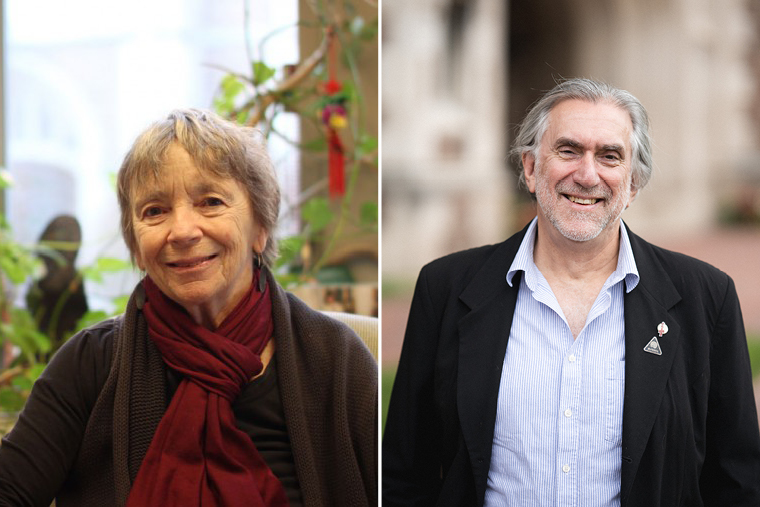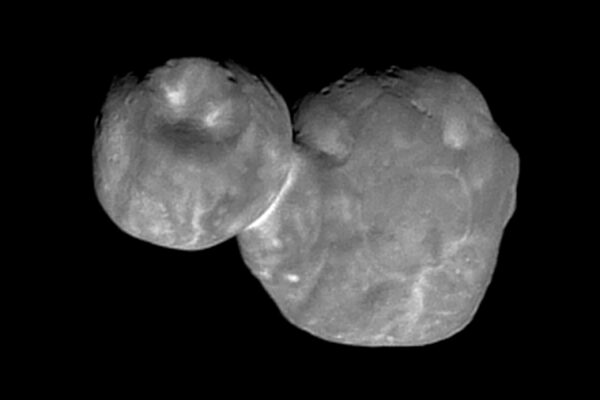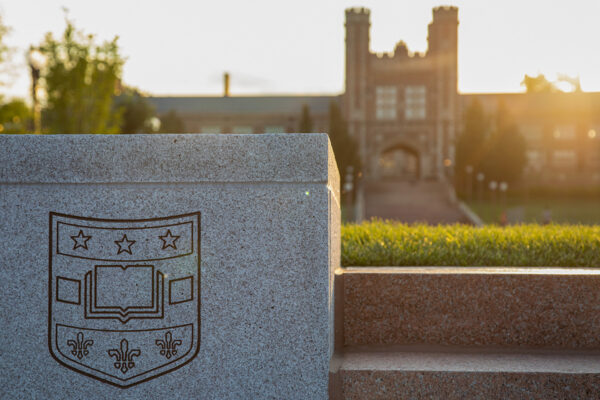Ursula W. Goodenough, a professor emerita of biology, and William B. McKinnon, a professor of earth and planetary sciences, both in Arts & Sciences at Washington University in St. Louis, have been elected to the National Academy of Sciences. Election to the academy, announced May 2, is considered one of the highest honors that can be awarded to a U.S. scientist or engineer.
Goodenough is a high-profile molecular cell biologist who taught biology and evolution at Washington University and engaged in research on the sexual cycle of the green soil alga Chlamydomonas, on ciliary motility and on algal biofuel precursors. She is a fellow of the American Academy of Arts and Sciences and the American Microbiology Society and served as president of the American Society for Cell Biology.
She also has helped bridge the gap between science and religion. Goodenough and others are developing what is called a religious naturalist orientation, and a new edition of her book, “The Sacred Depths of Nature: How Life Emerged and Evolved” (Oxford University Press), describes her understanding of this orientation. Goodenough earned her bachelor’s degree in biology from Barnard College in 1961 and doctoral degree in biology from Harvard University in 1969.
McKinnon’s research focuses on the icy satellites of the outer solar system and the physics of impact cratering. He concentrates on structure, origin, evolution, tectonics and bombardment history of outer planet satellites and Kuiper belt objects. At Washington University, where McKinnon is a faculty fellow of the McDonnell Center for the Space Sciences, he has taught classes on the solar system, planetary geophysics and dynamics, planetary geology, ice worlds and planetary exploration.
McKinnon is a science team member of the Radar for Icy Moon Exploration instrument for the European Space Agency’s Jupiter Icy Moons Explorer mission and a co-investigator with the ice-sounding Radar for Europa Assessment and Sounding: Ocean to Near-surface, the Mass Spectrometer for Planetary Exploration and the gravity/radio science investigations for NASA’s Europa Clipper mission. He is also a science team member of NASA’s New Horizons mission to Pluto and the Kuiper belt. McKinnon earned a bachelor’s degree in earth and planetary sciences from the Massachusetts Institute of Technology in 1976 and a PhD in planetary science and geophysics from the California Institute of Technology in 1981.
“The Arts & Sciences faculty elected to the National Academy of Sciences are true pioneers in their fields,” said Feng Sheng Hu, dean of Arts & Sciences and the Lucille P. Markey Distinguished Professor at Washington University. “Their groundbreaking research has significantly advanced our understanding of evolution and planetary science. I am so pleased that the National Academy of Sciences has recognized their achievements with this tremendous honor.”
The National Academy of Sciences announced 120 newly elected members in the U.S. and 23 international members in recognition of their distinguished and continuing achievements in original research. The total number of active members is now 2,565, and the total number of international members is 526. International associates are nonvoting members of the academy, with citizenship outside the United States.



